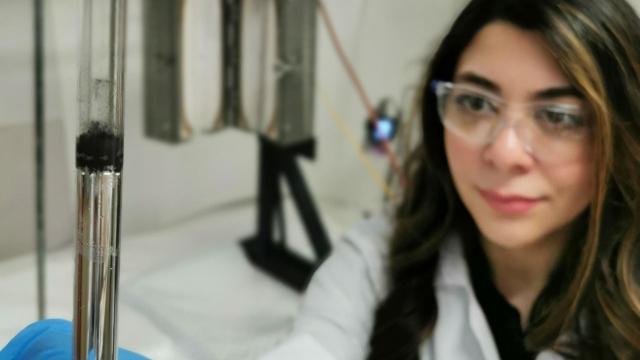A new technology has been developed by researchers at RMIT university that turns CO2 into solid carbon, effectively keeping CO2 fumes from entering the atmosphere.
First, a quick debrief. CO2 is one of the fumes that causes the most harm to the Earth. It does this through the greenhouse effect – CO2 fumes travel up to the atmosphere from Earth and get trapped.
CO2 buildup in the atmosphere bounces heat from the Sun back into space. It also stores heat in the Earth, bouncing it back down to the surface. CO2 is produced by factories, cars and power stations.
That’s an incredibly basic explanation of why CO2 is so hazardous for our environment and why we need to think of new ideas around the gas when we look to the future – but enter RMIT’s decarbonisation tech.
RMIT’s new technology is able to efficiently convert CO2 into solid carbon. It’s not a new concept, but RMIT’s newly developed technology is a near-commercial solution, they say.
“Our new method still harnesses the power of liquid metals but the design has been modified for smoother integration into standard industrial processes,” says Associate Professor Torben Daeneke, a co-lead researcher of the project.
“As well as being simpler to scale up, the new tech is radically more efficient and can break down CO2 to carbon in an instant.”
How does this decarbonisation tech work? Well, the process begins with heated liquid metal (at about 100-120°C). It’s injected with CO2, to cause a chemical reaction. CO2 bubbles rise to the surface of the liquid metal – as the bubbles rise up through the liquid, flakes of solid carbon are left behind. This reaction only takes a split second.
The above video doesn’t do the scope of this concept justice – upscaled, larger, commercialised versions of this technology could crackdown on CO2 internationally in many industries.
“We hope this could be a significant new tool in the push towards decarbonisation, to help industries and governments deliver on their climate commitments and bring us radically closer to net zero,” continued Daeneke.
A provisional patent application has been filed for this technology, with RMIT researchers recently signing a $2.6 million agreement with ABR, a new environmental tech startup.
“To accelerate the sustainable industrial revolution and the zero-carbon economy, we need smart technical solutions and effective research-industry collaborations,” says Dr Ken Chiang, a co-lead researcher on the project.
“It’s the extraordinary speed of the chemical reaction we have achieved that makes our technology commercially viable, where so many alternative approaches have struggled.”
One of the more wide-scale decarbonisation technologies out there focuses on compressing the gas into a liquid and injecting it into the ground, however, this is seen by the researchers as both expensive and energy-intensive. This new solution, however, can be done quite cheaply and is a more sustainable alternative, according to Daeneke.
“Turning CO2 into a solid avoids potential issues of leakage and locks it away securely and indefinitely,” Daeneke added.
“And because our process does not use very high temperatures, it would be feasible to power the reaction with renewable energy.”
The next step of the project is to scale it up to the size of a shipping container.
The team is also looking into the applications of the converted carbon and if it can be used for anything.
You can read about the CO2 to solid carbon tech in Energy and Environmental Science.
